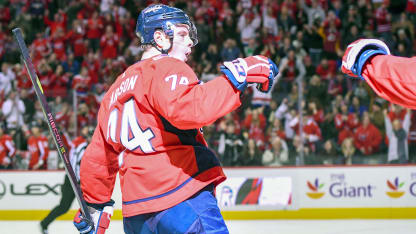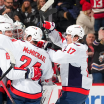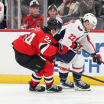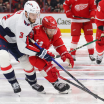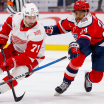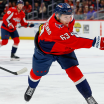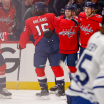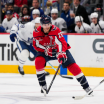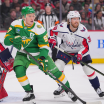Since Jan. 3, the Capitals boast the most efficient power play in the NHL, scoring 20 goals on 76 opportunities (26.3 percent) over 28 games. During that span, 10 different players have recorded a point on the power play, with defenseman John Carlson leading the way with 13 power play points (2g, 11a).
The Capitals have benefited greatly from Carlson's role as the point on the power play for much of 2017-2018, as the Natick, Massachusetts native has recorded a total of 26 power play points this season, tying Alex Ovechkin for the team lead and Shayne Gostisbehere of the Philadelphia Flyers for the most among defenseman league-wide.
"Obviously you have a guy up top too that can really bring it," said Nicklas Backstrom of Carlson. "I mean right now it's working well. Hopefully we can just keep going."
But the Capitals' recent power play success can be attributed to more than just Ovechkin and Carlson.
Evgeny Kuznetsov, who tallied 14 points on the power play last season, has contributed 22 through 69 games this year. He is one of several Capitals players to see a spike in power play productivity this season, resulting in a more flexible, and potent unit.
"I feel like the good thing about this power play is that if they try to shut down one option we have more options to come with," Backstrom said. "That's something you have to adjust for every day."
According to Carlson, when an opposing penalty kill tries to take space away from specific players on the power play, namely Ovechkin in the left face-off circle or T.J. Oshie in the slot, the other players on the ice are the beneficiaries of added time and room to make plays.
"I think you just take what's there," John Carlson said. "And they've been taking away a lot of other options because of the success that, especially T.J., had last year in the middle. He would kill teams on it and I think they're doing a really good job of taking that away and it opens up something else."
During the Capitals' first power play opportunity against Toronto March 3, Backstrom floated toward the goal uncontested, firing a shot off Frederik Andersen's blocker that found Kuznetsov's stick for the game's opening goal. Later, Kuznetsov and Backstrom teamed up again, this time unsettled and on the rush, for the team's second power play goal, demonstrating just how adaptable Washington's man advantage can be. The Capitals' most recent power play goal came from Alex Ovechkin on a wrist shot from his typical left dot spot on the power play, exemplifying that Washington has weapons all over the ice.
"It's going to be different every night, but obviously last game we had one static power play and one breakout goal, so that was nice," Backstrom said of the Capitals' power play production during the Stadium Series game at Navy Marine Corps Memorial Stadium.
Overall, the Capitals power play is tied for fifth in the NHL this season at 21.9 percent. Since Barry Trotz was named head coach for the 2014-15 season, Washington ranks first in power play percentage with 216 goals on 936 opportunities (23.1 percent), and has never finished a season outside the top five.
As the regular season draws toward its end and the team approaches the playoffs, the Capitals' power play will look to continue to convert the opportunities opponents give them. It could be the difference in any given series.
"It's big. Those power play goals are bonus goals for teams because you don't get that many chances in the playoffs, they don't call many penalties," Carlson said. "The more you can click going into it the better chance you'll have of success on it."
